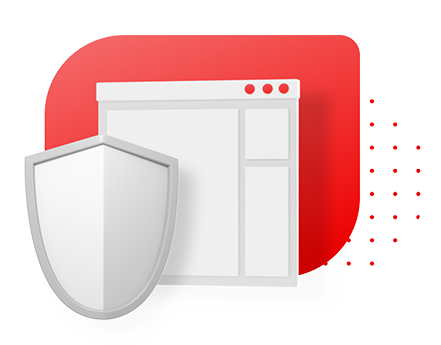Red Hat Enterprise Linux 10
Image mode for Red Hat Enterprise Linux
Image mode for Red Hat® Enterprise Linux® is a simple, consistent approach to building, deploying, and managing the operating system (OS) using container technologies.
Now available on Red Hat Enterprise Linux 9.6 and 10.
Highlights
Optimize operations
Streamline operations with image-based updates and rollbacks, just like your smartphone.
Deploy consistent environments
Ensure consistent OS deployments across all environments by applying the same image across your servers.
Enhance security
Reduce attack surfaces with immutable system images, ensuring you know exactly what’s in each image.
Contain drift. Accelerate delivery.
Image mode for Red Hat Enterprise Linux enables you to manage your OS with the same container tools and workflows as applications, creating a consistent experience and common language across teams.

Limit drift and anomalies
Image mode addresses the challenge of drift by helping keep your servers’ configurations the same, eliminating deviations that can lead to system instability and security risks.
With image-level updates, changes can be deployed, even across major releases, or rolled back without using external snapshots should issues arise. Together, this results in less time spent troubleshooting anomalies and shorter maintenance windows.

Reduce time to market
Deliver faster solutions using DevOps and continuous integration/continuous delivery (CI/CD), which now includes the OS.
With image mode, you can:
- Start with a bootc base image, which includes the kernel, bootloader, and other items that are typically excluded from application containers.
- Add any software or dependency to your bootc base image before you build and push it to the registry.
- Test images in advance by moving to more robust tooling within your CI/CD pipelines.
- Build anywhere with standard Open Container Initiative (OCI) tools and registries, including Podman Desktop.

Boost your security capabilities
Combining read-only system software with read-write configuration directories, image mode reduces the attack surface of the OS. With image mode, you can use container-oriented security tools all the way down at the OS level. Registry scanning and container signing now extends to cover both applications and the OS. Base images also include a software bill of materials (SBOM) to help users track and enhance their software supply chain across their environment.
Regardless of how you choose to build your image, image mode can help you simplify your compliance requirements by applying the same security hardening profiles (including STIG, PCI, and CIS) across your Red Hat Enterprise Linux systems.

Simplify appliance creation
Image mode lets you easily combine your OS with whatever applications and drivers you want for faster development and delivery. You can put your entire solution in a container, regardless of it running on a dedicated piece of hardware, cloud provider, or a virtual machine (VM). Image mode will also work even if your application already uses containers or isn’t container-friendly. This means you can spend more time on developing your solution rather than last minute OS integration.

Why image mode for Red Hat Enterprise Linux?
Use cases for image mode
Artificial intelligence and machine learning (AI/ML)
The strict versioning necessary for AI/ML workloads is well-suited for the container-build process. With image mode, you can go straight from prototyping your solution to running it on bare metal. Since image mode is foundational for Red Hat AI, Red Hat Enterprise Linux AI and OpenShift® AI also take advantage of image mode’s strict versioning control.
1:1 Application/host
Many organizations use VMs for primary isolation, which often results in running one primary application on each VM. Instead, you can make your applications more appliance-like by managing your deployments as a unit.
Edge appliances
Edge deployments often face a number of environmental challenges and constraints. Image-based updates can help by creating more stability throughout the system, letting you manage an entire fleet of systems more easily. You can also roll back changes as needed.
Container hosts
You can simplify container deployment by managing your underlying OS the same way as your application. Image mode can provide a higher degree of host-level customization than previous immutable operating systems.
A new approach to deploying the OS
The choice is yours with Red Hat Enterprise Linux 10. Image mode is a different method of deploying Red Hat Enterprise Linux, and package mode is the familiar install of Red Hat Enterprise Linux that has powered the enterprise for decades. Red Hat Enterprise Linux empowers organizations to select the most suitable approach for their specific workloads and organizational needs.
| Package mode | Image mode | |
|---|---|---|
| Build | Image builder | Container tools |
| Update | Packages (dnf) | Images (bootc) |
| Distribute | rpm repository | Container registry |
| Change | Run time (dnf) | Build time |
| Manage | Red Hat Insights, Red Hat Satellite, and Red Hat Ansible® Automation Platform | Deploy | Bare metal, VM, cloud, edge |







